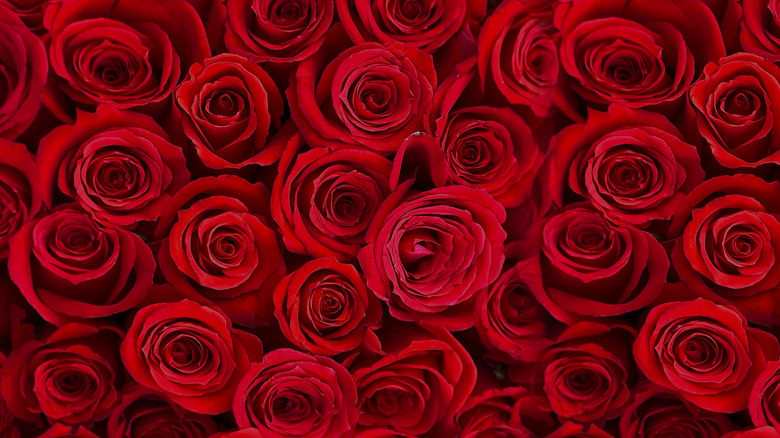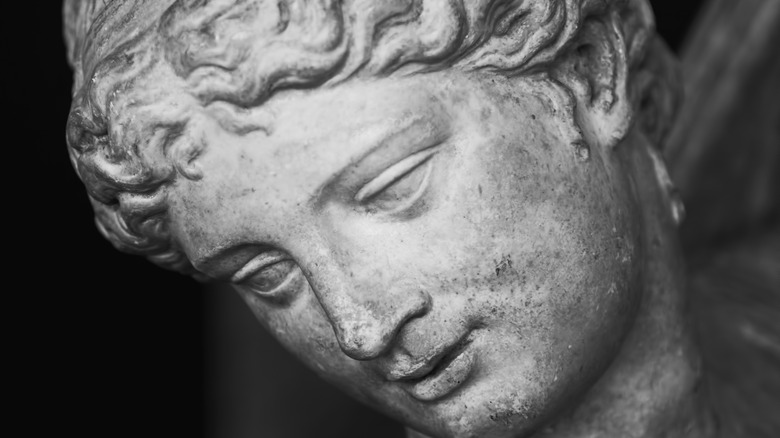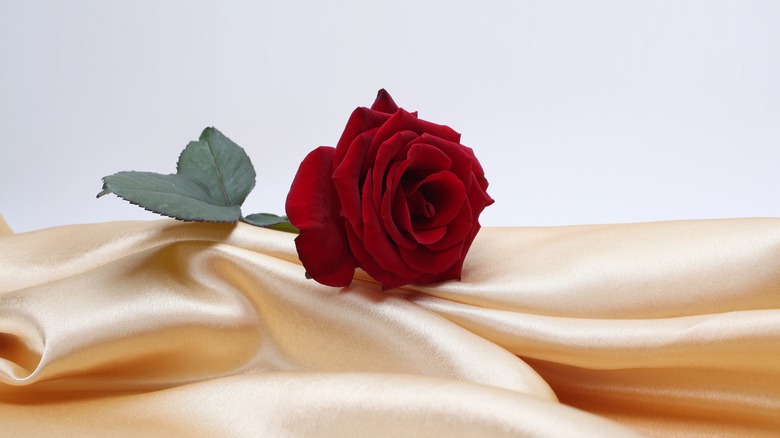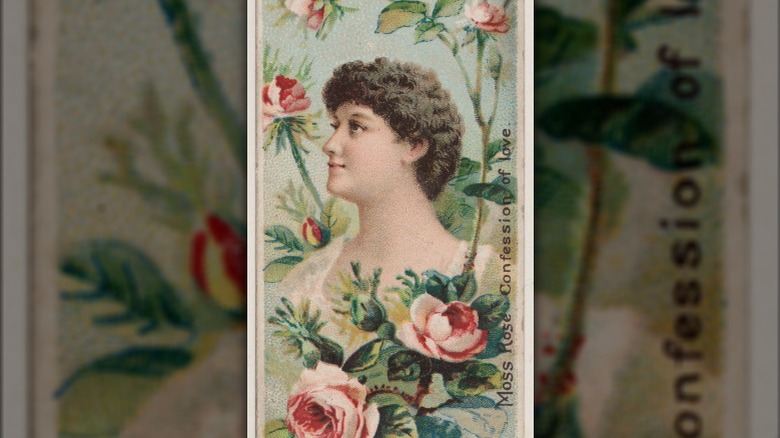How Red Roses Became The Romantic Symbol Of Valentine's Day
It is easy to think of items and accessories associated with Valentine's Day — heart-shaped decor and treats, cupid-inspired cards and balloons, and of course, red roses. Most people probably don't wonder why each of these has become a symbol for this day of love, but if you ever have pondered it, you wouldn't be the first. Understanding why certain elements are eternally tethered to a holiday can make it all the more interesting and give you a good reason to indulge. So why are red roses such a big part of V-day?
Flowers have had their own meanings and language for centuries. According to Museum Selection, people used to send one another flowers during the Victorian Era to convey and share secret messages, and each species represented a specific emotion. You can research different flower combinations that could relay an entire sentence or thought process, like gifting acacia and periwinkle to share your desire to become someone's friend. So with that in mind, what do roses actually symbolize, and how did they gain the title of the top Valentine's Day gifts to give?
Red is the color of passion
The color red is one of the most widely used colors in the world, and it elicits a variety of emotions depending on the shade, atmosphere, and purpose behind the use. Red can represent a plethora of emotions, including love and passion. It is these feelings that rise to the surface when someone sees a red flower or a red heart: they think of their loved one and the desire behind the color. Red has always been associated with a fiery background, and while anger is also connected to red, it is these high-level emotions that get the blood and heart pumping.
Red roses can actually be traced back 35 million years, according to Kremp Florist. Fossils of this flower can prove it existed all those years ago, but the history behind the red rose is steeped in lore and myth as much as truth. Entwined with Greek history, these flowers were considered a creation of the great goddess Aphrodite, whose blood turned a white rose red when she found her lover Adonis dying after a boar attack. She stepped on a thorn while going to him, and this was the beginning of the iconic flower (or so Greek Mythology tells it). While the Greeks believed the Goddess of Love was responsible for introducing roses to the masses, some turn to Cleopatra VII with the credit for making them such a coveted item. She was known for using rose petals as her personal scent, and Ancient Origins notes this was a ritual whenever she appeared publicly.
From Greece to Rome and beyond
It wasn't until the Romans took over the story of Aphrodite, turning her into Venus for their tales, that the rose officially turned into the flower of love and passion. It was already considered a romantic artifact to the Greeks, but it was steeped in sorrow too, but the Romans used this flora to feed their vanity. The use of petals for everything from confetti to props during romantic liaisons made roses incredibly popular during the height of the Roman Empire, though University of Illinois Extension notes that they were grown and tended in the Middle East.
It seems most people of power enjoyed the passion, lust, and enamor that came with red roses. It was during the Eighteenth Century that roses came to Europe. By this point, these flowers were already associated with nobility and royalty but also with love. Once the rose made its way to European culture, it was only a matter of time before people began to give their own meaning to its presence. The 19th century gave birth to the idea of a "flower language," which spurred Victorians to communicate their feelings through bouquets or collections of blooms. Time points to this as the beginning of modern-day sentiments regarding the red rose and its affinity for inspiring love, poetry, and words of passion.
Roses symbolize passion, love, and desire
Valentine's Day has a long and rather unclear beginning, with Britannica pointing to a martyr who lived around 270 CE. His story talks about a letter that was signed "your Valentine," which he had sent to the daughter of the person who was holding him captive. The day could also be associated with a Saint by the same name who helped couples get married to protect the men from being sent away to battle by an emperor. While the stories vary, one fact remains: Valentine's Day did not become a holiday based on romance until the 14th century.
People began communicating romantic notions through messages in the 1500s, and eventually, commercial companies began printing cards for people to buy and give to one another. During the 1800s, American distributors started incorporating Cupid into their illustrations, which was the Roman god of love. Other mementos for the holiday included hearts, which signify love, and red roses, which people widely connected with the same emotion. Bouquets of these flowers embody passion, beauty, adoration, intrigue, and desire. The more people depicted roses in pictures and designs for Valentine's Day, the more ingrained the flowers became until the two could no longer be separated. Now, whenever you see a red rose, you'll know that centuries of lovers have looked upon the same petals when they've felt true love in their hearts.
Roses and Valentine's Day: love at first sight
Another reason people relish giving their loved ones bouquets of red roses on Valentine's Day is the enigma surrounding them. They are considered exquisite and special: not necessarily an everyday flower to include in a vase on the table. Growing them in the garden is one thing, but being given a massive bundle of crimson or apple red petals is a sign of esteem. The offering party is showing how much you ignite passion inside them, and the language of flowers had different emotional meanings for roses depending on the color.
One of the most intoxicating traits of the rose is the variety of shades they come in. The Victorians felt that deep burgundy was representative of an unrealized affection, and Hyperallergic explains that different hues could be used to explain a range of loving emotions. However, no matter what tone the red is on a rose, the color is inextricably linked with love, especially when it comes to the most romantic holiday on the calendar: Valentine's Day.




